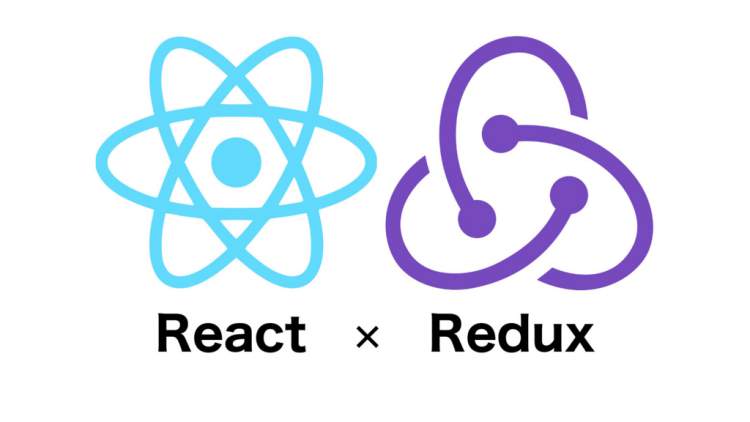前兩篇教程介紹了 Redux 的[基本用法](216731)和[異步操作](216732),今天是最后一部分,介紹如何在 React 項目中使用 Redux。
[TOC]
為了方便使用,Redux 的作者封裝了一個 React 專用的庫?[React-Redux](https://github.com/reactjs/react-redux),本文主要介紹它。
這個庫是可以選用的。實際項目中,你應該權衡一下,是直接使用 Redux,還是使用 React-Redux。后者雖然提供了便利,但是需要掌握額外的 API,并且要遵守它的組件拆分規范。

## 一、UI 組件
React-Redux 將所有組件分成兩大類:UI 組件(presentational component)和容器組件(container component)。
UI 組件有以下幾個特征。
> * 只負責 UI 的呈現,不帶有任何業務邏輯
> * 沒有狀態(即不使用`this.state`這個變量)
> * 所有數據都由參數(`this.props`)提供
> * 不使用任何 Redux 的 API
下面就是一個 UI 組件的例子。
> ~~~
> const Title =
> value => <h1>{value}</h1>;
> ~~~
因為不含有狀態,UI 組件又稱為"純組件",即它純函數一樣,純粹由參數決定它的值。
## 二、容器組件
容器組件的特征恰恰相反。
> * 負責管理數據和業務邏輯,不負責 UI 的呈現
> * 帶有內部狀態
> * 使用 Redux 的 API
總之,只要記住一句話就可以了:UI 組件負責 UI 的呈現,容器組件負責管理數據和邏輯。
你可能會問,如果一個組件既有 UI 又有業務邏輯,那怎么辦?回答是,將它拆分成下面的結構:外面是一個容器組件,里面包了一個UI 組件。前者負責與外部的通信,將數據傳給后者,由后者渲染出視圖。
React-Redux 規定,所有的 UI 組件都由用戶提供,容器組件則是由 React-Redux 自動生成。也就是說,用戶負責視覺層,狀態管理則是全部交給它。
## 三、connect()
React-Redux 提供`connect`方法,用于從 UI 組件生成容器組件。`connect`的意思,就是將這兩種組件連起來。
> ~~~
> import { connect } from 'react-redux'
> const VisibleTodoList = connect()(TodoList);
> ~~~
上面代碼中,`TodoList`是 UI 組件,`VisibleTodoList`就是由 React-Redux 通過`connect`方法自動生成的容器組件。
但是,因為沒有定義業務邏輯,上面這個容器組件毫無意義,只是 UI 組件的一個單純的包裝層。為了定義業務邏輯,需要給出下面兩方面的信息。
> (1)輸入邏輯:外部的數據(即`state`對象)如何轉換為 UI 組件的參數
>
> (2)輸出邏輯:用戶發出的動作如何變為 Action 對象,從 UI 組件傳出去。
因此,`connect`方法的完整 API 如下。
> ~~~
> import { connect } from 'react-redux'
>
> const VisibleTodoList = connect(
> mapStateToProps,
> mapDispatchToProps
> )(TodoList)
> ~~~
上面代碼中,`connect`方法接受兩個參數:`mapStateToProps`和`mapDispatchToProps`。它們定義了 UI 組件的業務邏輯。前者負責輸入邏輯,即將`state`映射到 UI 組件的參數(`props`),后者負責輸出邏輯,即將用戶對 UI 組件的操作映射成 Action。
## 四、mapStateToProps()
`mapStateToProps`是一個函數。它的作用就是像它的名字那樣,建立一個從(外部的)`state`對象到(UI 組件的)`props`對象的映射關系。
作為函數,`mapStateToProps`執行后應該返回一個對象,里面的每一個鍵值對就是一個映射。請看下面的例子。
> ~~~
> const mapStateToProps = (state) => {
> return {
> todos: getVisibleTodos(state.todos, state.visibilityFilter)
> }
> }
> ~~~
上面代碼中,`mapStateToProps`是一個函數,它接受`state`作為參數,返回一個對象。這個對象有一個`todos`屬性,代表 UI 組件的同名參數,后面的`getVisibleTodos`也是一個函數,可以從`state`算出?`todos`?的值。
下面就是`getVisibleTodos`的一個例子,用來算出`todos`。
> ~~~
> const getVisibleTodos = (todos, filter) => {
> switch (filter) {
> case 'SHOW_ALL':
> return todos
> case 'SHOW_COMPLETED':
> return todos.filter(t => t.completed)
> case 'SHOW_ACTIVE':
> return todos.filter(t => !t.completed)
> default:
> throw new Error('Unknown filter: ' + filter)
> }
> }
> ~~~
`mapStateToProps`會訂閱 Store,每當`state`更新的時候,就會自動執行,重新計算 UI 組件的參數,從而觸發 UI 組件的重新渲染。
`mapStateToProps`的第一個參數總是`state`對象,還可以使用第二個參數,代表容器組件的`props`對象。
> ~~~
> // 容器組件的代碼
> // <FilterLink filter="SHOW_ALL">
> // All
> // </FilterLink>
>
> const mapStateToProps = (state, ownProps) => {
> return {
> active: ownProps.filter === state.visibilityFilter
> }
> }
> ~~~
使用`ownProps`作為參數后,如果容器組件的參數發生變化,也會引發 UI 組件重新渲染。
`connect`方法可以省略`mapStateToProps`參數,那樣的話,UI 組件就不會訂閱Store,就是說 Store 的更新不會引起 UI 組件的更新。
## 五、mapDispatchToProps()
`mapDispatchToProps`是`connect`函數的第二個參數,用來建立 UI 組件的參數到`store.dispatch`方法的映射。也就是說,它定義了哪些用戶的操作應該當作 Action,傳給 Store。它可以是一個函數,也可以是一個對象。
如果`mapDispatchToProps`是一個函數,會得到`dispatch`和`ownProps`(容器組件的`props`對象)兩個參數。
> ~~~
> const mapDispatchToProps = (
> dispatch,
> ownProps
> ) => {
> return {
> onClick: () => {
> dispatch({
> type: 'SET_VISIBILITY_FILTER',
> filter: ownProps.filter
> });
> }
> };
> }
> ~~~
從上面代碼可以看到,`mapDispatchToProps`作為函數,應該返回一個對象,該對象的每個鍵值對都是一個映射,定義了 UI 組件的參數怎樣發出 Action。
如果`mapDispatchToProps`是一個對象,它的每個鍵名也是對應 UI 組件的同名參數,鍵值應該是一個函數,會被當作 Action creator ,返回的 Action 會由 Redux 自動發出。舉例來說,上面的`mapDispatchToProps`寫成對象就是下面這樣。
> ~~~
> const mapDispatchToProps = {
> onClick: (filter) => {
> type: 'SET_VISIBILITY_FILTER',
> filter: filter
> };
> }
> ~~~
## 六、 組件
`connect`方法生成容器組件以后,需要讓容器組件拿到`state`對象,才能生成 UI 組件的參數。
一種解決方法是將`state`對象作為參數,傳入容器組件。但是,這樣做比較麻煩,尤其是容器組件可能在很深的層級,一級級將`state`傳下去就很麻煩。
React-Redux 提供`Provider`組件,可以讓容器組件拿到`state`。
> ~~~
> import { Provider } from 'react-redux'
> import { createStore } from 'redux'
> import todoApp from './reducers'
> import App from './components/App'
>
> let store = createStore(todoApp);
>
> render(
> <Provider store={store}>
> <App />
> </Provider>,
> document.getElementById('root')
> )
> ~~~
上面代碼中,`Provider`在根組件外面包了一層,這樣一來,`App`的所有子組件就默認都可以拿到`state`了。
它的原理是`React`組件的[`context`](https://facebook.github.io/react/docs/context.html)屬性,請看源碼。
> ~~~
> class Provider extends Component {
> getChildContext() {
> return {
> store: this.props.store
> };
> }
> render() {
> return this.props.children;
> }
> }
>
> Provider.childContextTypes = {
> store: React.PropTypes.object
> }
> ~~~
上面代碼中,`store`放在了上下文對象`context`上面。然后,子組件就可以從`context`拿到`store`,代碼大致如下。
> ~~~
> class VisibleTodoList extends Component {
> componentDidMount() {
> const { store } = this.context;
> this.unsubscribe = store.subscribe(() =>
> this.forceUpdate()
> );
> }
>
> render() {
> const props = this.props;
> const { store } = this.context;
> const state = store.getState();
> // ...
> }
> }
>
> VisibleTodoList.contextTypes = {
> store: React.PropTypes.object
> }
> ~~~
`React-Redux`自動生成的容器組件的代碼,就類似上面這樣,從而拿到`store`。
## 七、實例:計數器
我們來看一個實例。下面是一個計數器組件,它是一個純的 UI 組件。
> ~~~
> class Counter extends Component {
> render() {
> const { value, onIncreaseClick } = this.props
> return (
> <div>
> <span>{value}</span>
> <button onClick={onIncreaseClick}>Increase</button>
> </div>
> )
> }
> }
> ~~~
上面代碼中,這個 UI 組件有兩個參數:`value`和`onIncreaseClick`。前者需要從`state`計算得到,后者需要向外發出 Action。
接著,定義`value`到`state`的映射,以及`onIncreaseClick`到`dispatch`的映射。
> ~~~
> function mapStateToProps(state) {
> return {
> value: state.count
> }
> }
>
> function mapDispatchToProps(dispatch) {
> return {
> onIncreaseClick: () => dispatch(increaseAction)
> }
> }
>
> // Action Creator
> const increaseAction = { type: 'increase' }
> ~~~
然后,使用`connect`方法生成容器組件。
> ~~~
> const App = connect(
> mapStateToProps,
> mapDispatchToProps
> )(Counter)
> ~~~
然后,定義這個組件的 Reducer。
> ~~~
> // Reducer
> function counter(state = { count: 0 }, action) {
> const count = state.count
> switch (action.type) {
> case 'increase':
> return { count: count + 1 }
> default:
> return state
> }
> }
> ~~~
最后,生成`store`對象,并使用`Provider`在根組件外面包一層。
> ~~~
> import { loadState, saveState } from './localStorage';
>
> const persistedState = loadState();
> const store = createStore(
> todoApp,
> persistedState
> );
>
> store.subscribe(throttle(() => {
> saveState({
> todos: store.getState().todos,
> })
> }, 1000))
>
> ReactDOM.render(
> <Provider store={store}>
> <App />
> </Provider>,
> document.getElementById('root')
> );
> ~~~
完整的代碼看[這里](https://github.com/jackielii/simplest-redux-example/blob/master/index.js)。
## 八、React-Router 路由庫
使用`React-Router`的項目,與其他項目沒有不同之處,也是使用`Provider`在`Router`外面包一層,畢竟`Provider`的唯一功能就是傳入`store`對象。
> ~~~
> const Root = ({ store }) => (
> <Provider store={store}>
> <Router>
> <Route path="/" component={App} />
> </Router>
> </Provider>
> );
> ~~~
(完)
